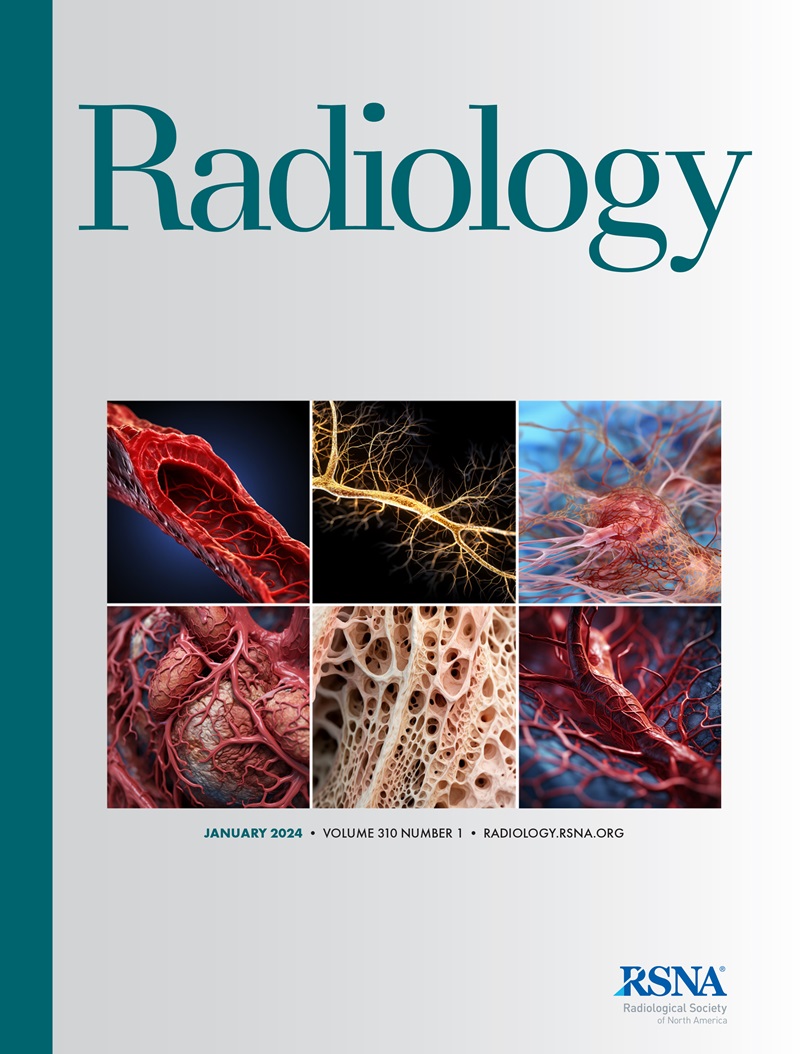我是怎么做的:在大型医院环境中推进美国的护理点。
IF 15.2
1区 医学
Q1 RADIOLOGY, NUCLEAR MEDICINE & MEDICAL IMAGING
引用次数: 0
摘要
POCUS (Point-of-care US),也被称为焦点美国、目标美国、临床美国、床边美国或急诊美国,是一种快速发展的动态成像工具,有助于快速诊断和知情床边决策。POCUS设备是便携式的,价格合理的,并且对于非放射科医生来说易于使用。与诊断性US相比,POCUS有几个优势,包括可及性、实时评估和提供即时结果。这使得POCUS在指导床边手术时非常有用,例如中央和外周导管放置时的血管通路。然而,在广泛的医疗保健网络中推进POCUS需要现有多学科生态系统中POCUS利益相关者和临床部门之间的合作。这种合作应支持非放射学同事确保高质量的患者护理和简化的操作,同时确保POCUS成像的可用性进行比较。在大型医院环境中创建一个全面的POCUS项目需要像其他临床成像项目一样的政策和指导方针。领导力、培训计划、认证机构、文件、适当的图像存储和质量保证对于任何临床成像计划都是必不可少的,包括POCUS。这篇综述文章提出了一个框架,旨在标准化POCUS实践在整个卫生保健系统,从而提高诊断的准确性和患者的结果。本文章由计算机程序翻译,如有差异,请以英文原文为准。
How I Do It: Advancing Point-of-Care US in a Large Hospital Setting.
Point-of-care US (POCUS), also known as focused US, targeted US, clinical US, bedside US, or emergency US, is a rapidly evolving, dynamic imaging tool that aids in rapid diagnoses and informed bedside decision-making. POCUS devices are portable, affordable, and considered easy to use for nonradiologists. POCUS has several advantages over diagnostic US, including improved accessibility, real-time assessment, and provision of immediate results. This makes POCUS useful to guide bedside procedures, such as vascular access for central and peripheral line placement. However, advancing POCUS across a broad health care network requires collaboration among the POCUS stakeholders and clinical departments within the existing multidisciplinary ecosystem. This collaboration should support nonradiology colleagues to ensure quality patient care and streamlined operations while ensuring POCUS imaging availability for comparison. Creating a comprehensive POCUS program in a large hospital setting requires policies and guidelines like those of other clinical imaging programs. Leadership, training programs, credentialing bodies, documentation, proper image storage, and quality assurance are essential for any clinical imaging program, including POCUS. This review article presents a framework aimed to standardize POCUS practice across a health care system, thereby enhancing both diagnostic accuracy and patient outcomes.
求助全文
通过发布文献求助,成功后即可免费获取论文全文。
去求助
来源期刊

Radiology
医学-核医学
CiteScore
35.20
自引率
3.00%
发文量
596
审稿时长
3.6 months
期刊介绍:
Published regularly since 1923 by the Radiological Society of North America (RSNA), Radiology has long been recognized as the authoritative reference for the most current, clinically relevant and highest quality research in the field of radiology. Each month the journal publishes approximately 240 pages of peer-reviewed original research, authoritative reviews, well-balanced commentary on significant articles, and expert opinion on new techniques and technologies.
Radiology publishes cutting edge and impactful imaging research articles in radiology and medical imaging in order to help improve human health.
 求助内容:
求助内容: 应助结果提醒方式:
应助结果提醒方式:


